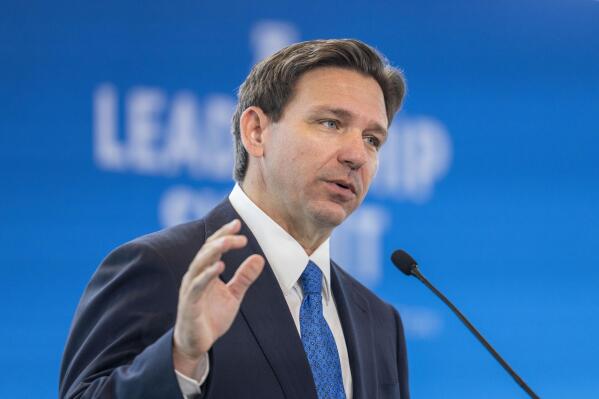Snap, Sprint, Swarm: How an Urgency-First Mindset and ‘Play for Each Other’ Ethos Flipped Florida Football’s 2024 Spiral Into Late-Season Momentum
Momentum doesn’t change because a slogan hits a T‑shirt. It changes when film sessions stop being polite, when veterans start policing walkthrough tempo, when backs sprint through the echo of the whistle in late October the same way they did under summer sun, when a locker room decides that embarrassment is a better fuel than excuse. That is the story players inside Florida’s program tell about 2024—a season that could have calcified into another chapter of frustration but instead pivoted on something invisible that made everything else unavoidable: urgency married to accountability, fused to a rediscovered willingness to play for the guy next to you rather than the brand stitched across your chest. The scoreboard lagged before it reflected the shift; the body language showed it first. By November, analysts who had written the Gators off were whispering about their line surge, their rally tackling, their fourth‑quarter resolve. A team that had been fading found traction not in a schematic overhaul, but in the emotional architecture that schemes live inside.
The pivot point came, as these things often do, in the dull heat of a Sunday corrective practice that players still reference. The film was ugly—missed fits, lazy pursuit, wide receiver stalk blocks ending two steps early, linemen peeling off doubles without finishing—and the coaching staff stopped parsing technique from effort. Billy Napier opened the cutup, hit pause on a mid‑drive loaf, and asked the room whether anyone could honestly say that was championship strain. To a man, they couldn’t. The meeting turned interactive; seniors and underclassmen broke huddle by position and circled plays they wanted back. Accountability moved from coaches to peers. By the time practice ended, the program’s internal leadership council had scribbled two phrases onto the whiteboard: urgency every rep, and play for each other. The staff didn’t coin them; the players did. That mattered.
Urgency started with the clock—literally. Florida began segmenting periods in shorter, high‑intensity bursts punctuated by immediate reset coaching so reps never decayed into jog‑throughs. Practice fields layered situational football at warp speed: sudden‑change red zone with defense already minus a timeout; tempo drives starting with simulated penalties; special‑teams sprint inclusions dropped into offensive install to spike heart rates and decision fatigue. The goal wasn’t punishment; it was inoculation. SEC Saturdays don’t hand out oxygen breaks after busted coverage; they stack stress. The Gators decided to live in that stress Monday through Thursday so Fridays felt like recovery and Saturdays felt familiar. Players say the shift was brutal for a week, then addictive. When urgency becomes rhythm, effort becomes habit rather than emotional spikes.
Playing for each other required more than slogans. The Gators rewired communication lines. Position groups sat in mixed pods during film so linemen heard defensive back corrections and skill players watched trench strain up close. Trust formed in cross‑positional empathy: receivers saw what backside cut blocks did for zone; linebackers saw how coverage leverage bought their blitz angles; everyone saw how one soft rep could crater eleven. Napier’s staff amplified this by grading “strain assists”—moments where a player’s effort directly enabled someone else’s success. Pancake blocks that sprung explosives, backside pursuit that forced cutbacks into waiting tacklers, decoy motion that cleared a touchdown seam—each got tagged, celebrated, and shown just as often as star plays. When strain for others earns equal praise, buy‑in accelerates.
Midseason metrics quietly confirmed the behavioral shift. Florida’s explosive plays allowed per snap dipped, not because coverage shells radically changed, but because pursuit angles sharpened and late‑rep rallies erased cutback touchdowns. Offensive negative plays shrank as receivers sustained contact and tight ends finished second‑level fits. Penalties after the whistle—those heat‑of‑the‑moment lapses that scream ego over team—declined. Red‑zone efficiency rose as quarterbacks trusted progressions instead of forcing hero throws; teammates believed windows would be there because routes were run at full speed even when the ball went elsewhere the previous drive. Urgency plus trust equals patience, and patience under pressure is where good offenses live.
The turning‑point game—players nominate different weeks, but most circle a late road grinder—became the proof of concept. Down late in hostile noise, Florida strung together a drive featuring every pillar of the new identity: a backside receiver ran a chase route he’d blown earlier in the year and sealed a corner to spring a 12‑yard gain; the offensive line double‑teamed through the whistle and re‑set the sticks; the quarterback checked to a boundary glance based on a safety tilt that pre‑shift communication identified; a tight end threw himself into a blitzer he had no business reaching but bought the half‑second needed for the throw. Touchdown. Sideline reaction was different—no isolated celebrations, just helmets rattled, gloves slapped, veterans grabbing freshmen and yelling “that’s us.” Florida’s defense followed with a stand fueled by gang tackling that would’ve splintered in September. Momentum isn’t mystical; it’s belief repeated until outcomes match. That night it did.
Leadership reoriented. Early in the season, coaching voices filled the air; by November, player huddles ran the sideline. When a young safety blew a fit, an older linebacker walked him through it before the position coach arrived. When effort dipped in a Tuesday period, a rotational guard called out the starters. Napier, long billed as a culture builder, finally saw culture operating without his hand on the lever. Outsiders mocked his process language when wins lagged; insiders watched the long fuse catch. The urgency mindset matured from accountability session to ecosystem.
NIL and portal fluidity could have fractured that ecosystem; instead, Florida leveraged both into cohesion. The collective tied select performance incentives to team benchmarks—academic, community, and on‑field strain metrics—so players literally profited together. Portal conversations became transparent: staff laid out snap paths and development plans, urging guys to stay not out of guilt but because the group’s momentum could elevate draft stock. Retention of key contributors midseason sent a message: the locker room believed staying mattered. When players see peers turn down quick exits because the room feels real, cynicism fades.
Defensively, urgency manifested as population to the ball. Early tape showed solo tackles turning into yards after contact; late tape showed three, four, five blue jerseys in frame. Pursuit rules were simplified—chase hip, flatten, finish—and chase effort was graded ruthless. Depth improved because rotation guys understood their four reps mattered; when they flashed, coaches trusted them with eight. Fresh legs late produced sacks that had been elusive in September. Opponents complained Florida “looked faster”; GPS data said top speeds barely changed. Angles did.
Offensively, tempo became situational rather than identity handcuff. Early‑year drives occasionally sputtered when scripted pace clashed with defensive looks; urgency plus trust let Florida slow to diagnose or speed to exploit without sideline confusion. Communication shorthand—hand signals, mirrored word pairs—tightened, reducing delay flags that once killed rhythm. Backs pressed holes with conviction because linemen strained longer; linemen strained longer because backs had proven they’d wait. Mutual assurance loops eliminate hesitation, and hesitation kills SEC drives.
Special teams, the hidden confidence barometer, benefited from the cultural shift. Coverage units sprinted; lane integrity held; returners trusted blocks deep in their own territory because practice reps mirrored game chaos. Field position quietly tilted Florida’s way over the final month, buying the offense shorter fields and the defense longer grass. Urgency is contagious; one phase humming drags the others.
None of this erases the work ahead. Florida still lost games, still blew assignments, still felt the structural growing pains of rebuilding in the meanest neighborhood in college football. But by the end of 2024, the program had something it hadn’t owned since its last truly competitive era: a portable identity rooted in shared strain. Opponents left the field talking about effort as much as scheme. Recruits noticed the sideline cohesion on TV. Alumni who had grown restless started talking about foundation instead of fissure. Momentum isn’t victory; it’s velocity toward it. Florida left 2024 moving forward.
That matters because 2025 looms as the verification year—the one Danny Wuerffel and other program voices have circled, the one Napier’s tenure will be judged against, the one where urgency has to translate into ranked scalps. Banks returned up front to anchor a defense that now expects strain. Quarterback development finally syncs with receiver buy‑in. Strength numbers suggest fourth‑quarter drop‑off should narrow again. If the 2024 cultural pivot holds, Florida won’t enter 2025 hoping to compete; it will expect to. Expectations can crush fragile teams; they sharpen urgent ones.
Ask players what they remember most from the turnaround and they don’t name a play. They talk about a Tuesday in pads when a scout‑team guard pancaked a starter and the sideline erupted because effort beat pedigree. They talk about film sessions where embarrassment turned into inside jokes turned into corrections turned into pride. They talk about texting each other the night before games: not “go get yours,” but “let’s make them feel us.” That’s how momentum becomes memory and memory becomes standard.
Florida football in 2024 rediscovered that standard in slow, sweaty steps—urgency first, ego last, play for the man next to you until he can’t imagine playing without you. The Swamp felt it by season’s end, a low rumble that said something was finally changing beneath the surface metrics. Whether 2025 cashes that energy into wins will decide narratives, jobs, and legacies. But whatever happens next, the flip that made it possible began with a room full of players willing to look at ugly tape and declare the future more important than pride. That is where turnarounds start. That is where this one did.



